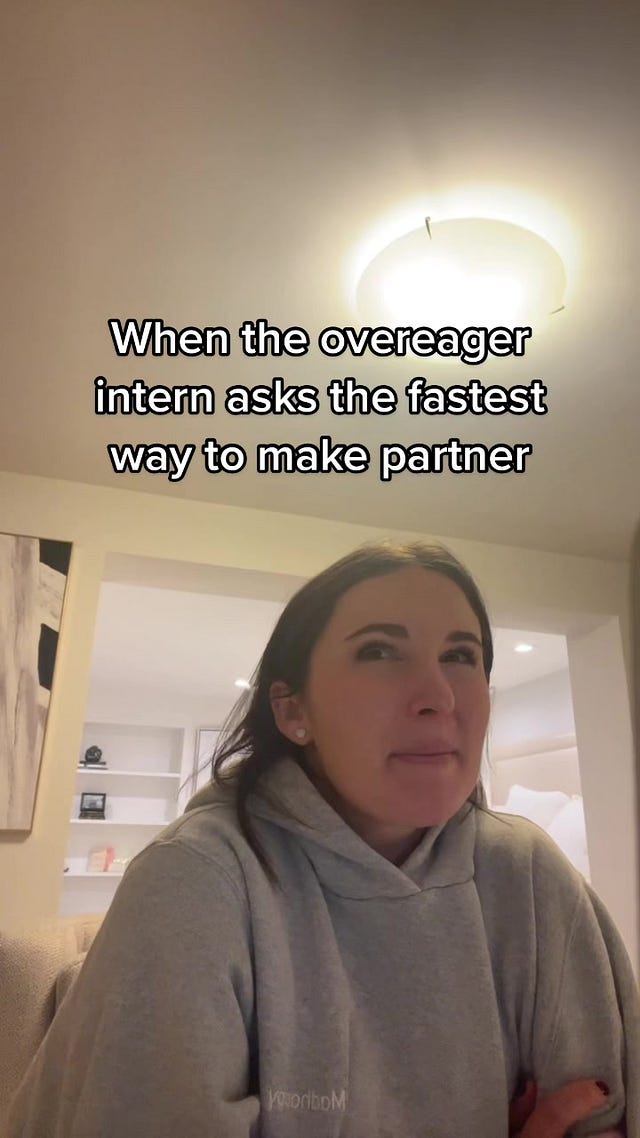Can TikTok reach 'platform status?'
Wondering if the hottest company in media has a natural ceiling -or if it can crack the triopoly
 Tiktok failed to load.
Tiktok failed to load.Enable 3rd party cookies or use another browser
About two years ago I was having a conversation with a very large traditional advertiser. This brand was highly data-driven, and was far from reluctant to spend on digital advertising.
I asked them about TikTok - and basically they said they weren’t interested.
“The back end just isn’t there,” they said. “There is so much more we can do with our data on other platforms.”
Essentially this person was saying, TikTok didn’t have anything close to the behind-the-scenes ad platform that Meta had - via which brands could blend their identity data with Meta’s identity information, along with ad response data and real time market pricing to deliver targeted ads to literally billions of people. That was tough for anybody to contend with.
Obviously, a lot of things have changed over the past two years.
TikTok is an absolute cultural juggernaut, growing to the degree that its sucking audience away from other media (and really, other leisure habits). Oh, and Meta’s ad business advantage has been broken.
In the past, I’ve asked whether TikTok can steal TV market share (it’s clear they already are stealing TV ad budgets). Nowadays I’m wondering if TikTok can have it all.
Meaning, can TikTok graduate from a video player to platform on the level of Google/Facebook/Amazon. Or is that not ultimately what makes the app Tik?
This week on my podcast, I spoke with Adrienne Lahens, Global Head of Operations, TikTok Creator Marketing Solutions , who in my opinion has one of the coolest jobs in our industry. Basically Lahens’ job is to play liaison between brands and the TikTok creator community.
 Tiktok failed to load.
Tiktok failed to load.Enable 3rd party cookies or use another browser
I realize that many brands are highly active on TikTok, and there are a wealth of specialty agencies and middlemen who can advise marketers on the potential for creator-driven campaigns. But I suspect many marketers are still lost and somewhat wary of TikTok, because their executives probably don’t actually use it much, and they have a hard to articulate fear of its Chinese connections.
That’s where Lahens comes in. She helps brands like Apple connect with TikTok talent such as Ben Palmer.
Lahens acknowledged that for many brands, TikTok takes getting used to -even for those that are already heavily active in social video and influencers.
“TikTok is an entertainment platform, not a social platform,” she explained. “We operate on a content graph versus a social graph. So if you’re a user on TikTok, it’s all about the type of content you engage with.”
For brands, that means that campaigns hit differently than on platforms that are follower driven (like YouTube) where big creators are able to attract consistent audiences.
“The potential downside to [working with TikTok creators] is that there’s more volatility,” said Lahens. “You might be viral one day, and your next video might not have as much traction.”
“The beauty of that is, it’s incredibly democratizing, for brands and creators alike,” she added. “It ensures that brands are showing up with their best foot forward.”
That’s where I see the potential challenge for TikTok long term - does the number of marketers who can operate this way have a natural ceiling? Or has TikTok built the back-end necessary to cater to everybody?
__________________________________Sponsor_______________________________
Next in Marketing is hosted in partnership with Zefr. Don't rely on open web brand safety solutions for the walled gardens. Zefr's new measurement suite, Atrium, was built exclusively for walled gardens like Meta, TikTok and YouTube to give full transparency into brand safety and suitability, all aligned to the GARM standards.
___________________________________________________________________________
As with any social network, the most effective ad strategy appears to be making unique ‘native’ content. Ads should be TikToks, whether produced by brands, or produced by influencers for brands.
That takes practice, and ideally an insiders’ knowledge of what works on TikTok.
“The advice we give to brands is to really spend a lot of time thinking about your values as a brands and make sure that the creators you are partnering with really aligns with your values,” said Lahens. That makes sense, but doesn’t sound simple, or fast.
I was watching highlights of the recent Luma Digital Marketing Summit, and so much of the talk was about how the whole industry has spend the past year reorienting behind new identifiers, first party data, clean rooms, and ads that drive immediate, highly trackable ROI. That’s why retail media has exploded.
Does any of that stuff translate well to a content graph, one which friend connections and identity data seems to be purposefully downplayed?
In TikTok’s favor of course, is, alongside retail media’s growth over the past few years has been “the emergence of influencer marketing to a mainstream marketing channel,” said Brian Andersen, co-Founder and Head of Digital Marketing Investment Banking of LUMA Partners.
“If you asked me my view of influencer marketing in 2019 I’d say it was interesting,” Anderson said. “Brands called it experimental.”
Now Luma predicts that influencer marketing will enjoy a 24% CAG from 2019-2024, netting out at $7 billion. Which is not nothing, but it’s not TV money, let alone platform money.
I wonder how stable that growth will be as we hit rocky economic times, and marketing spending becomes all about quick and accountable options.
To be sure, TikTok doesn’t soley rely on influencer campaigns. There are plenty of ways to run classic paid ads that aren’t necessarily super-custom, made-for-TikTok spots. The company is forecast to bring in $10 billion on its own this year.
Lahens noted that for many influencer campaigns, there is a degree of ‘service’ necessarily to get a campaign off the ground. Still, the company has rolled out a number of offerings aimed at making the production of influencer ads more high speed, and the creative more trackable.
For example, using the TikTok Creator Marketplace brands can fill out a brief and get a slate of potential creative partners in less than 10 seconds. TikTok has also been able to speed up both the approval process and the workflow for some brands. Nascar was able to get an effort live in just six days, and according to Lahens “You can’t tell the difference,” between that and campaigns that take months to roll out.
At the end of the day, TikTok may be just fine with sucking up huge chunks of influencer spending and TV budgets. There is a lot of money there. Yet in the same way we often ask why CTV can’t eventually expand its ad base to millions of advertisers (like Google and Facebook), it seems logical to ask the same thing of TikTok. It may sound like a reach to expect the local pizza place or plumber to get on TikTok, but increasingly we’re seeing Gen Z use the app as an alternative to search engines. And loads of people use TikTok to shop, or at least get ideas.
Lahens noted that 15% of product discoveries in 2022 were driven by TikTok, according to its research. To help connect product discoveries with actions, TikTok is encouraging creators to include product links in their comment sections.
A recent Nielsen study found that TikTok delivered 96% higher ROI, and triple the offline sales efficiency compared to other digital sellers.
“The misconception is that it’s all upper funnel, said Lahens.
It all sounds great on paper. The proof will be when TikTok is able to get all those data-sophisticated DTC brands, along with millions of SMBs on board. YouTube has been able to figured this out over the years, by blending pre-roll ads and influencer campaigns with annoying but DR-perfect overlay ads. Does TikTok have an ad unit up its sleeve that lends itself to quick and dirty programmatic buys? Does it want to?
The recent Walmart retargeting partnership seemed a step the right direction. Maybe TikTok ultimately just outsources identity and targeting to the Walmarts and Amazon’s of the world, and doesn’t need to play catch up to Meta and others. I’ve heard mixed things from ad buyers on their progress. MarketingBrew reported some hesitancy among CMOs to share any sort of data with the Bytedance-owned would-be-giant.
In the meantime, I suppose the hope at TikTok is, recession or not, if you’re that big, and that influential - no brands will be able to afford to say they’re not interested.







